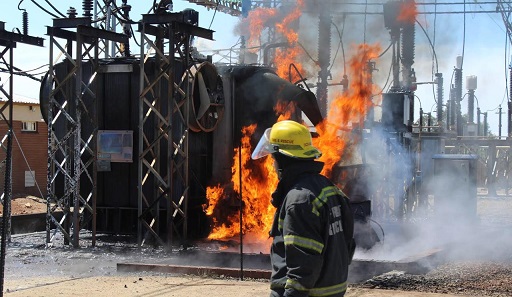What Causes a Power Transformer to Catch Fire?
Transformer burnout is very common in transformer faults. The main reasons are as follows:
(1) There are no fuses on the high and low voltage sides of the transformer. While some are equipped with fuses and horn safety, fuses are mostly replaced by aluminum or copper wire. When the low voltage is short-circuited or overloaded, the fuse cannot be blown normally, and the transformer is burned out.
(2) The configuration of the high and low voltage fuses of the transformer is incorrect. Fuses on transformers are often overconfigured. When severely overloaded, the transformer will burn out.
(3) Due to the large number of rural lighting lines, most of them use single-phase power supply, coupled with the randomness and insufficient management of jumpers during the construction process, resulting in partial operation of the distribution load. Long-term use will cause the insulation of the phase coils to age and burn out the transformer.
(4) Tap-changer: 1. Adjust the tap-changer without permission, resulting in the tap-changer not in place, poor contact and burnt out. 2. The quality of the tap changer is poor, resulting in incomplete contact at the star contact position, short circuit or ground discharge.

(5) Oil leakage is a common fault of transformers. Since the transformer body is full of oil, there are rubber beads and rubber pads at each joint to prevent oil leakage. After a long-term operation of the transformer, the rubber beads and rubber pads will crack and cause oil leakage. As a result, the insulation performance is degraded after moisture, and the discharge is short-circuited, thereby causing the transformer to burn out.
(6) Most of the high-voltage and low-voltage lines of the transformer are introduced by overhead lines, because the arrester is not put into operation or the 10kV arrester is not installed. Burn the transformer when struck by lightning.
(7) Multi-point grounding of the iron core.
(8) When a grounding and phase-to-phase short circuit occurs on the low-voltage side of the transformer, a short-circuit current 20 to 30 times higher than the rated current will be generated. Such a large current acts on the high-voltage winding and will generate large mechanical stress inside the coil. This mechanical stress will cause the coil to compress. The stress also disappears after the short-circuit fault is removed. If the coil is repeatedly mechanically stressed, the insulating beads and pads will loosen; the core plywood bolts will loosen, and the high-voltage coil will twist or crack. In addition, high temperature is generated, which causes the transformer to burn out in a very short time.
(9) Man-made damage: 1. The lead wires of the transformer are copper screws, and the overhead wires are generally made of aluminum core rubber wires. Electrolytic corrosion easily occurs between copper and aluminum. 2. Bushing flashover discharge is also a common abnormal phenomenon in dry-type transformers.
Kingrun Transformer Instrument Co.,Ltd.


More Transformer Testers from Kingrun





